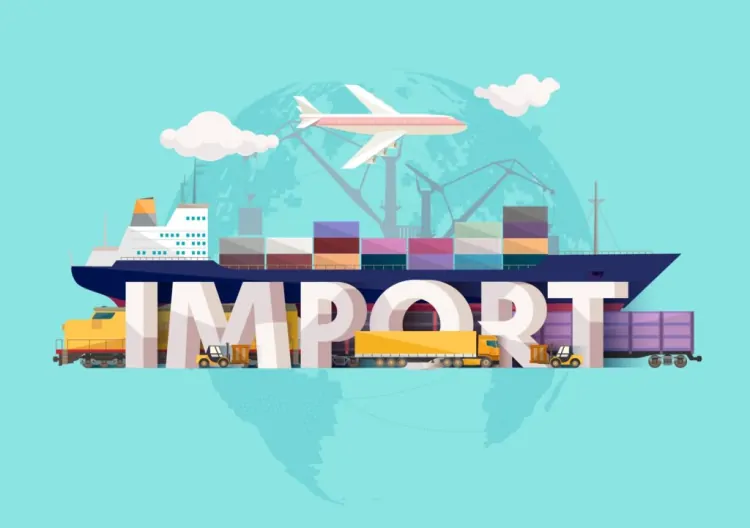How Much to Import from the USA?
This article delves into these topics, offering a comprehensive guide for importers.

In today's globalized economy, importing goods from different countries has become a routine part of business operations. Whether you're a small business owner or a large corporation, understanding the cost to import from the USA and the process of importing from Malaysia to India can be critical to optimizing your supply chain and reducing expenses. This article delves into these topics, offering a comprehensive guide for importers.
Cost to Import from the USA
When considering importing goods from the United States, several factors contribute to the overall cost. Here, we break down these costs to help you understand what to expect and how to budget effectively.
Shipping Costs
Shipping costs are one of the most significant expenses in importing goods. The cost depends on several factors, including the size and weight of the shipment, the mode of transportation (air or sea), and the shipping route.
-
Air Freight: Typically faster but more expensive, air freight is suitable for smaller, high-value items or when quick delivery is essential.
-
Sea Freight: More economical for larger, heavier shipments, but transit times are longer.
Tariffs and Duties
Tariffs and duties are taxes imposed by the destination country on imported goods. These costs vary based on the type of goods, their value, and trade agreements between countries.
-
Harmonized System (HS) Codes: These codes classify goods for customs purposes and determine the applicable duty rates. Understanding HS codes is crucial for accurately estimating import costs.
-
Trade Agreements: Free trade agreements between countries can reduce or eliminate tariffs, affecting the overall cost.
Customs Brokerage Fees
Customs brokers facilitate the import process by handling documentation and compliance with regulations. Their fees can vary based on the complexity of the shipment and the services required.
-
Documentation: Ensuring all paperwork, such as bills of lading and commercial invoices, is in order to prevent delays.
-
Compliance: Assisting with regulations compliance to avoid fines and penalties.
Additional Costs
Additional costs may include insurance, warehousing, and inland transportation from the port to the final destination. Each of these elements can impact the total cost to import from the USA.
-
Insurance: Protects against loss or damage during transit.
-
Warehousing: Storage fees if goods need to be held at the port or a distribution center.
-
Inland Transportation: Costs for moving goods from the port to their final destination.
Import from Malaysia to India
Importing from Malaysia to India involves its own set of procedures and considerations. Malaysia is a key trade partner with India, and understanding the import process can help streamline operations.
Understanding the Import Process
The import process from Malaysia to India requires adherence to specific regulations and documentation. Here’s a step-by-step guide to help you navigate the process:
Obtain an Importer-Exporter Code (IEC)
An IEC is mandatory for any business in India engaged in importing or exporting goods. This code is issued by the Directorate General of Foreign Trade (DGFT) and is crucial for customs clearance.
Product Classification and Documentation
Accurate classification of products using HS codes is essential for determining the applicable duties and taxes. Ensure all necessary documentation is prepared, including:
-
Commercial Invoice: Detailing the transaction and terms.
-
Packing List: Describing the contents of the shipment.
-
Certificate of Origin: Proving the origin of the goods, which can affect duty rates under trade agreements.
Customs Clearance
Customs clearance is a critical step in the import process. It involves the submission of documents, payment of duties, and compliance with Indian regulations.
-
Online Filing: Use the Indian Customs Electronic Commerce/Electronic Data Interchange (EC/EDI) Gateway for electronic submission.
-
Duty Payment: Pay applicable customs duties based on product classification and value.
Costs Involved in Importing from Malaysia to India
Several costs are associated with importing goods from Malaysia, each impacting the total expenditure.
Freight Costs
Freight costs are determined by the shipment's size, weight, and mode of transportation. Malaysia's proximity to India often makes shipping more cost-effective.
-
Sea Freight: Commonly used due to lower costs and the ability to handle larger shipments.
-
Air Freight: Used for high-value or time-sensitive goods.
Tariffs and Taxes
Import duties and taxes must be calculated based on the goods' classification and value. India and Malaysia are both part of the ASEAN-India Free Trade Area (AIFTA), which can offer reduced tariff rates for qualifying goods.
-
HS Codes: Accurate classification is necessary for determining applicable rates.
-
AIFTA Benefits: Take advantage of reduced tariffs for eligible products under the agreement.
Additional Expenses
Additional costs may include handling fees, insurance, and inland transportation.
-
Handling Fees: Charged for loading and unloading goods at ports.
-
Insurance: Recommended to cover potential losses during transit.
-
Inland Transport: Costs for moving goods within India from ports to their destination.
Comparing the Import Processes
Understanding the nuances of importing from both the USA and Malaysia can provide insights into optimizing your import strategy.
Key Differences
-
Distance and Shipping Time: The USA is farther from India than Malaysia, affecting shipping time and costs.
-
Trade Agreements: Different agreements with each country impact tariff rates and regulatory requirements.
Key Similarities
-
Documentation and Compliance: Both processes require meticulous documentation and adherence to regulations.
-
Cost Considerations: Freight, duties, and additional expenses are common to both import processes.
Conclusion
Importing goods involves navigating a complex landscape of regulations, costs, and logistics. Whether you're looking at the cost to import from the USA or planning to import from Malaysia to India, understanding these factors can help you make informed decisions and optimize your operations. By leveraging trade agreements, accurately classifying products, and partnering with experienced customs brokers, businesses can effectively manage import expenses and streamline their supply chain.
What's Your Reaction?
















